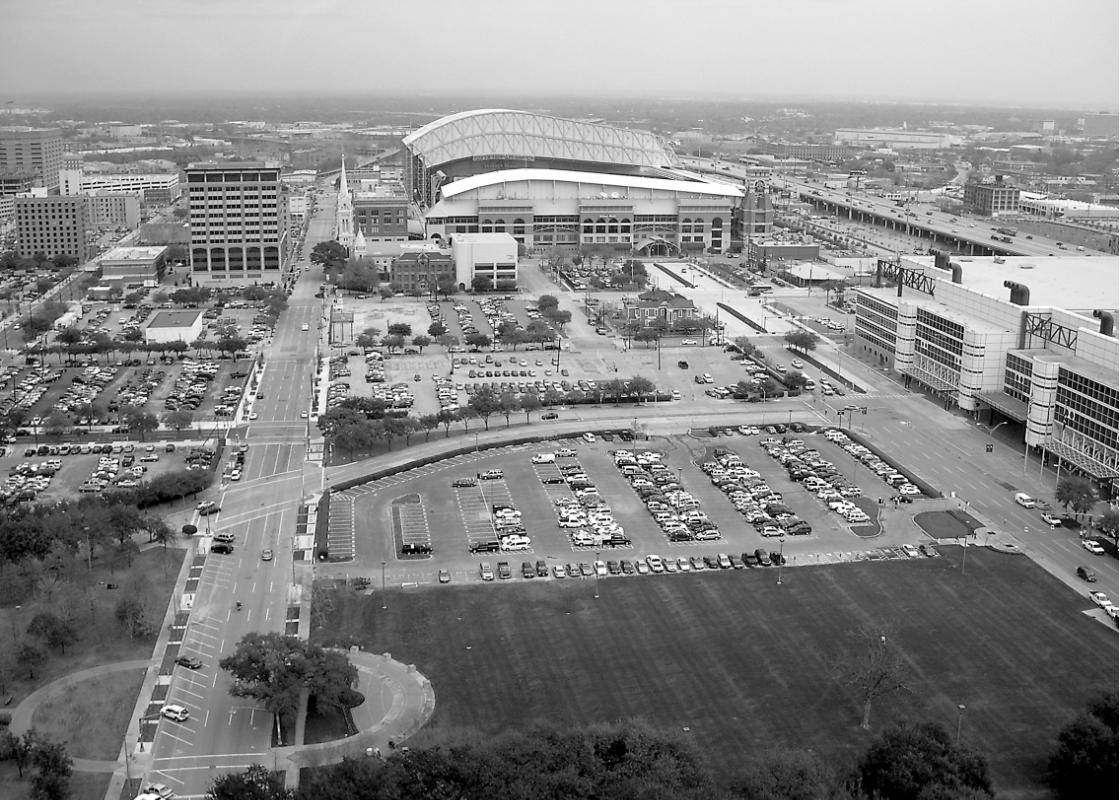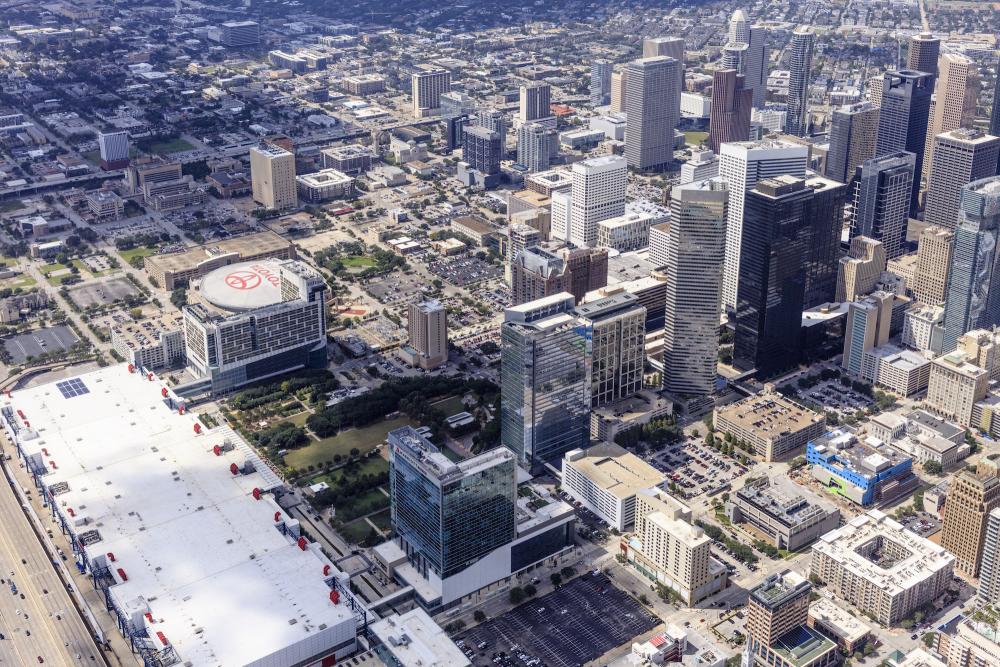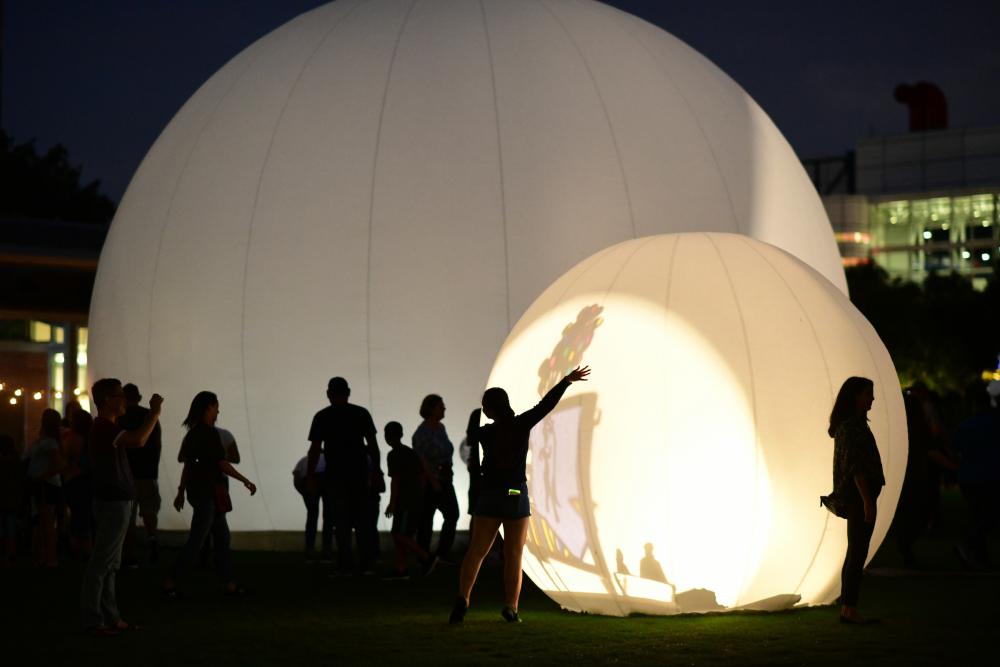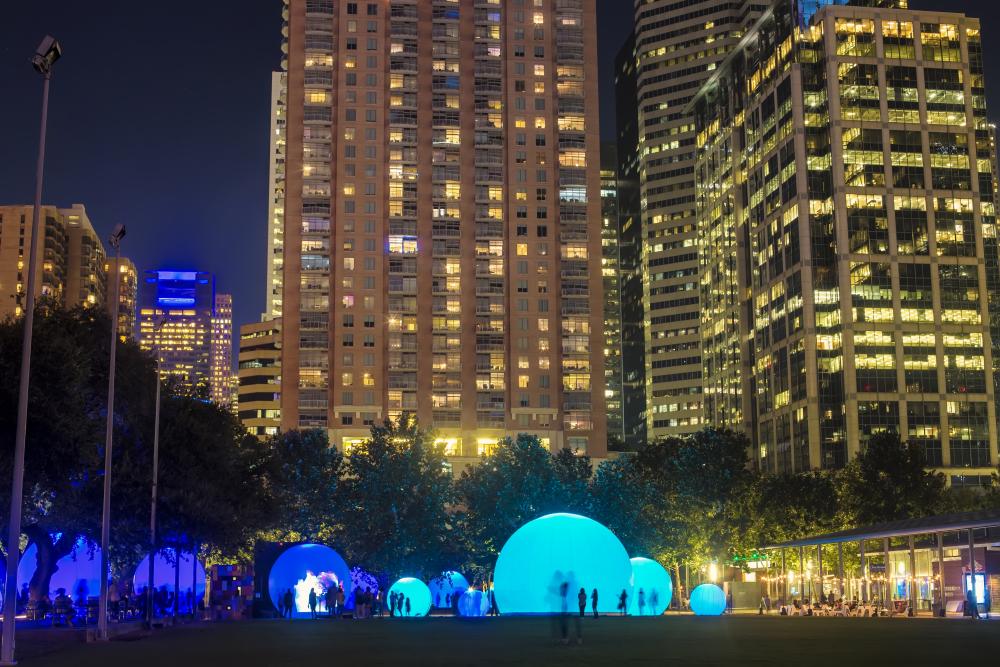When you think about being at Discovery Green, what’s the first memory that comes to mind? A concert you saw? A movie screening? The Art Car Parade preview? Zumba classes? For all of us, different experiences color our perception of the park, creating a patchwork of unique, entirely Houstonian, moments. From its opening in April of 2008, the park has immersed itself headlong into the myriad lives of its citizens—all of them. Or, at least, as many citizens as are willing to come downtown and partake in what the park has to offer—which is a considerable number of people: 1.5 million per year according to Discovery Green Conservancy (DGC) president Barry Mandel. More than twice the initial projected estimates, before the park was built. For American Planning Association (APA) President Kurt Christiansen, the fact that the park was built at all, in the midst of what was then a sea of parking, was a remarkable achievement, and a signal that Houston was ready to change its image from a concrete expanse, to a green oasis. It is largely for this reason, that the APA is recognizing the park today as a 2019 Great Public Space in America.
The APA’s Great Places in America program, founded in 2007, serves to respect and highlight locations of “exceptional character, quality, and planning,” and has three main divisions: Great Neighborhoods, Great Public Spaces, and Great Streets. Given how Discovery Green has enabled the creation of the Convention District (or “Avenida District”), it’s easy to see why the park deserves this new honor. For the APA’s Christiansen, the decision was easy to make, with the park’s very presence in the downtown area being the central reason for the park’s selection.
One of only six public spaces to receive this distinction in 2019, it is even more fitting that the APA has selected Houston as the site of its next national conference in 2020. What the park does very well, Christiansen argues, is that it “creates a space that is comfortable for multiple types of people (...) and the hotels add to the wonderful aspect of the park,” referring to the burgeoning hospitality venues that have emerged as a result of Discovery Green’s presence. For Mandel, the recognition by the APA is “another feather in our cap, [but also] another highlight for the City of Houston—it’s not about us, but about how a city of concrete can become a city of green.” The green he refers to here is literal, of course, but the economic development aspect of the park does not go unnoticed, either.
To a great extent, the buzz about Discovery Green has always been here, but Mandel highlights a specific moment when the tide really turned for the park: the Super Bowl. Houston received acclaim for the way it accepted visitors, and Discovery Green was right at the center of it. Surrounded by hotels, restaurants, and the convention center, the park created a quadrangle of sorts, what the National Football League referred to as a campus, which no other city has.
But it hasn’t always been smooth sailing for the park— the changes the park has seen have been the result of its unforeseen success. Initially planned as a small- to medium-sized park that would receive half a million visitors a year, Discovery Green has seen 1.5 million visitors a year, for the past ten years. This amount of traffic has exposed the weaknesses: the parking, the constant maintenance on the lawn, and a children’s playground that has been loved a little too much, and let’s not forget the infamous Pokemon Go debacle at the height of its craze in 2016, when flashmobs of smartphone wielding visitors would descend on the park at 3 a.m. But Discovery Green has not let these issues get the better of it. Mandel laughs about the Pokemon incident now and says that the park has learned from its mistakes. There are more restrooms now. The lawn sees regular maintenance as a matter of course, and a new hill for the children’s play area will be surfaced with synthetic lawn. The new children’s playground is imminent, and bespoke elements will be replaced with more regular, but no less interesting play equipment.
But the most exciting bit about the park, is what’s being planned for its future. Both Mandel and Board Director Judy Nyquist (who is the chair of the Public Art Committee as well as an RDA board member) both point to public art as the future of Discovery Green. “Museums can be intimidating!” quips Nyquist, who says that the barriers of entry to public art are non-existent. “For art in a public setting, there is a sense of respect and understanding,” she says and talks about the success of the moonGARDEN installation of 2018, drawing crowds late into the evening to observe the large- scale, internally illuminated spheres that cast an eerie but comforting glow into the Houston night. For Nyquist and Discovery Green, those art installations give people a reason to come together and share experiences that would otherwise never occur—the park becomes, in a way, what Rem Koolhaas might describe as a social condenser, where unexpected, delightful encounters emerge, where people are drawn to visual spectacles whose connectivity is the park itself. But even more so, the park is, fundamentally, a place for health, wellness, and equity. Office workers escape their air-conditioned confines and eat their lunch at a bench, not staring at a screen. Hotel and convention guests seek refuge under the shade of the Live Oak trees. Children run around or climb the Jean Dubuffet sculpture, Monument Au Fantôme, which they absolutely shouldn’t do, or otherwise roll themselves down the small hill—a temporary feature whose success has ensured its permanence. Young and old, of all races and backgrounds, come to see the concerts and movies (Paul Wall anyone? A silent movie with a new score by The Golden Arm Trio, perhaps?), and mingle and share the Houston night. Indeed, it is a Great Public Space in America.













